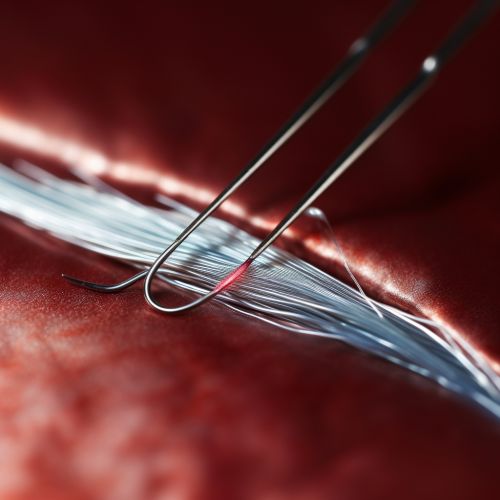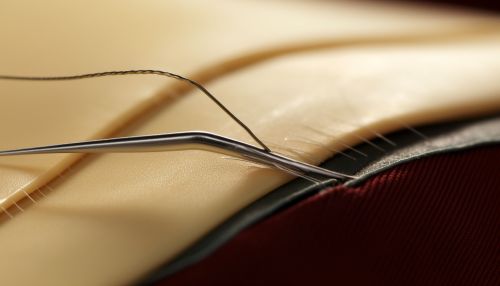Suture (medicine)
Anatomy of Sutures


In the realm of medical science, a suture refers to a stitch or a row of stitches holding together the edges of a wound or surgical incision. Sutures are a fundamental aspect of surgery, utilized in a wide range of procedures from minor laceration repair to complex surgical operations. The primary purpose of sutures is to hold tissue together in approximation while healing occurs naturally.
Sutures can be classified into two broad categories: absorbable and non-absorbable. Absorbable sutures are designed to degrade over time within the body, while non-absorbable sutures are made from materials that are not metabolized by the body. The choice of suture material depends on the nature of the wound, the patient's health status, and the surgeon's preference.
History of Sutures
The use of sutures dates back to ancient times. The earliest known use of sutures is documented in ancient Egyptian medical texts, which describe the use of animal sinew and plant materials to close wounds. Over the centuries, a variety of materials have been used for suturing, including silk, linen, and even gold. The development of synthetic materials in the 20th century revolutionized suture technology, leading to the creation of modern sutures that are strong, reliable, and less likely to cause infection.
Suture Techniques
There are several techniques for placing sutures, each with its own advantages and disadvantages. The most common techniques include the simple interrupted suture, the running suture, and the mattress suture.
The simple interrupted suture is the most basic and commonly used technique. Each stitch is tied individually, providing a secure closure that remains intact even if one suture fails.
The running suture, also known as a continuous suture, involves a single strand of suture material that is woven in and out of the wound. This technique is faster than the simple interrupted suture, but it is less secure because if one part of the suture fails, the entire closure may come undone.
The mattress suture is a variation of the interrupted suture that provides increased tension across the wound. This technique is often used in areas where wound edges are under high tension or when more precise control over wound edge apposition is required.
Suture Materials
Suture materials can be broadly classified into natural and synthetic materials. Natural materials include silk, cotton, and catgut, while synthetic materials include nylon, polypropylene, and polyglycolic acid. Each material has its own unique properties, including tensile strength, knot security, and tissue reactivity, which influence its suitability for different surgical applications.
Silk is a natural material that has been used for centuries due to its high tensile strength and good knot security. However, it is highly reactive and can cause significant inflammation, making it less suitable for use in contaminated or infected wounds.
Nylon and polypropylene are synthetic materials that are strong, non-reactive, and have excellent knot security. They are commonly used for skin closure and in cardiovascular and ophthalmic surgery.
Polyglycolic acid is a synthetic absorbable material that is widely used in general surgery. It has good tensile strength and low tissue reactivity, making it suitable for use in a variety of surgical procedures.
Complications of Sutures
While sutures are generally safe and effective, complications can occur. These can be broadly classified into early and late complications.
Early complications include infection, dehiscence (separation of the wound edges), and hematoma (accumulation of blood within the wound). These complications are often related to the surgical technique, the patient's health status, and the postoperative care.
Late complications include hypertrophic scarring, keloid formation, and suture granulomas. Hypertrophic scarring and keloid formation are abnormal responses to wound healing that result in raised, thickened scars. Suture granulomas are inflammatory reactions to suture material that can occur weeks to months after surgery.
Future of Sutures
The future of sutures lies in the development of new materials and techniques that improve wound healing and reduce complications. Research is ongoing into bioactive sutures that can deliver drugs or growth factors to enhance wound healing. Additionally, barbed sutures, which have tiny barbs that hold the suture in place without the need for knots, are becoming increasingly popular in cosmetic and reconstructive surgery.
